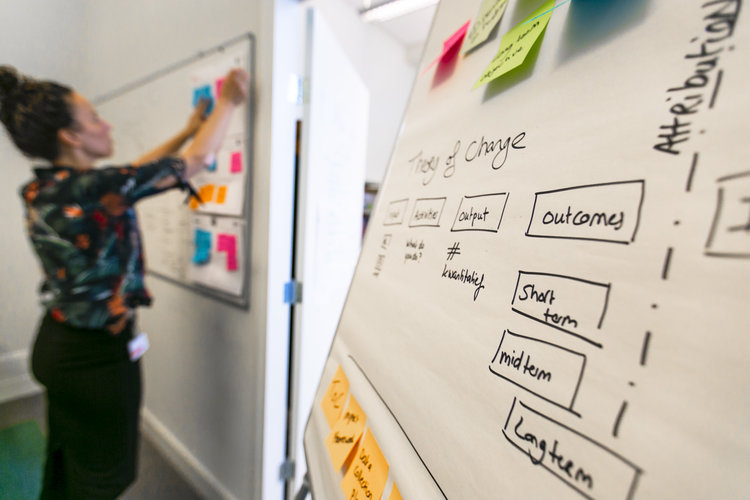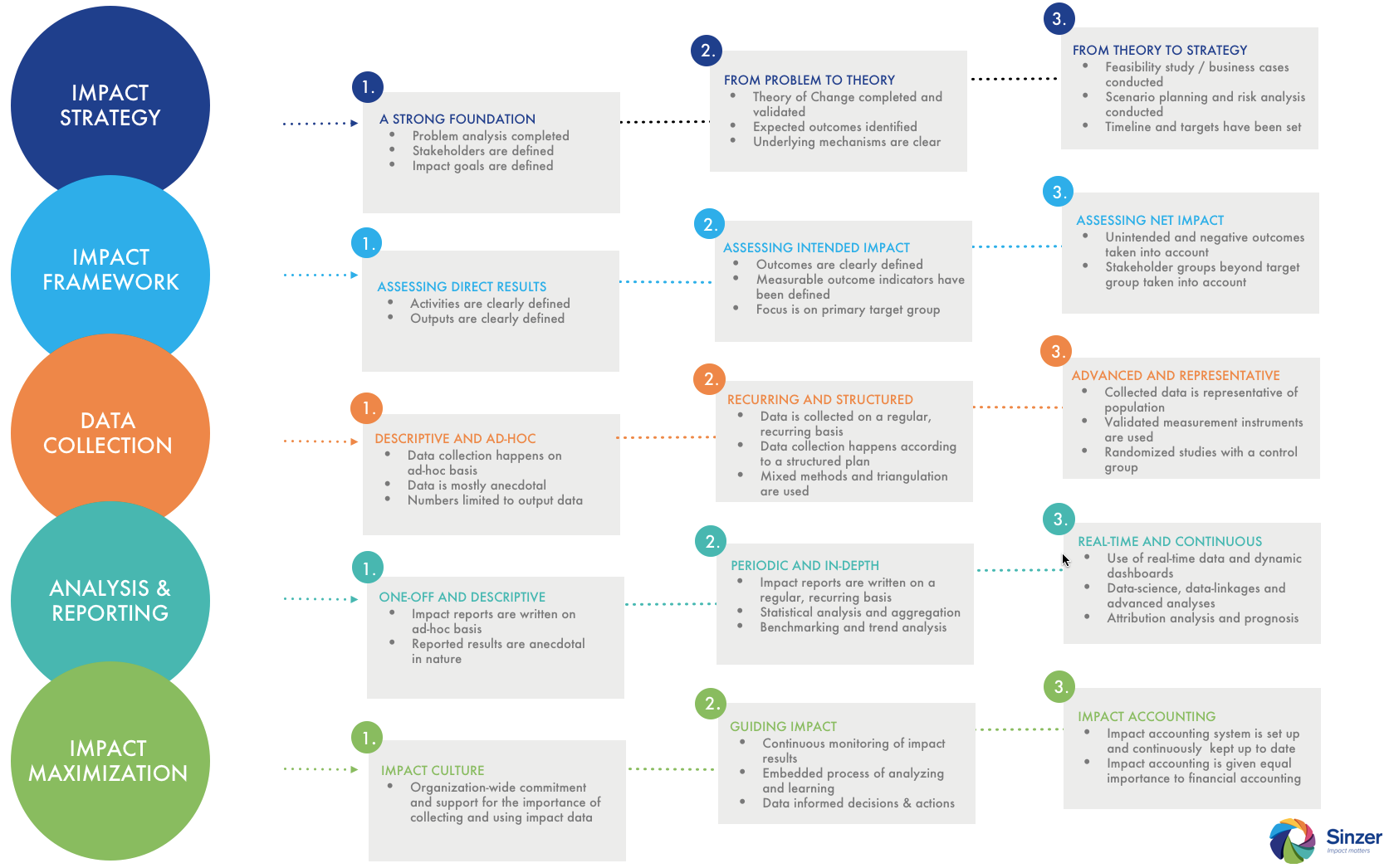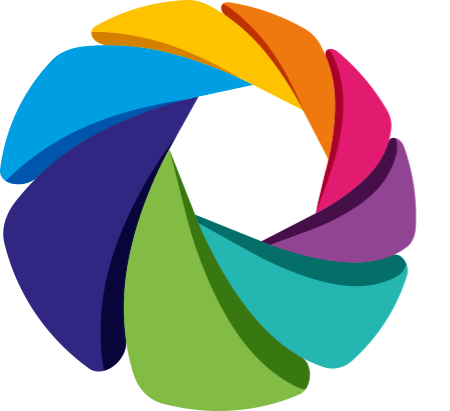Social and Environmental impact
Everything we do affects people and planet: the changes that occur for stakeholders, society and the environment as a result of our actions, is our social impact. This impact can be positive and negative, intended and unintended.
Impact management
Impact management is the process of investigating which outcomes are material (of sufficient significance and size); and then trying to prevent and minimize the negative and increase the positive outcomes. Impact management goes beyond impact measurement, as impact management entails an iterative (repetitive) process in which insights are continuously used for learning and improving.
What qualifies as “good enough”?
Many organisations agree that managing social and environmental impact is essential for organisations that wish to improve their impact, but demonstrating impact can also be a strong tool in communication or fundraising. Nevertheless, the number of organisations actively managing their impact is still very small. Why? Impact management is a relatively new field: although there are many methods, not many are widely accepted yet; and the many methods ‘out there’ vary from counting outputs to highly rigorous randomized experiments (RCT’s). In this variety of tools, methods and frameworks that can be used for impact management, it can be difficult to determine what “good enough” looks like, exactly. As a consequence, many organizations become discouraged or frustrated by the presumed complexity and magnitude of the task ahead, before they even get started.
Start small – and expand from there
At Sinzer & The Sector Inc., we see impact management as an iterative process, in which it is often not realistic – or desirable – to immediately develop and implement a fully rigorous process. On the contrary: impact management can best be seen as a growth path in which the organization starts with small steps to manage their impact, and then continue to expand their impact management practices within a program or the entire organization, leading to full impact maturity.
Impact maturity model
The Sinzer team has combined their knowledge and practical experience with impact management into the impact maturity model.
In this model we distinguish five components of impact management: 1) impact strategy; 2) impact framework; 3) data collection; 4) analysis and reporting; 5) impact maximization.
The maturity model distinguishes three growth phases for each of these five components, and describes what each growth phase looks like in terms of the elements of impact management. The further an organization moves from left to right through the model, the more rigorous the impact management is. This way, the model helps to determine where on the maturity spectrum one is, in terms of managing impact in the organization, and to make substantiated choices for potential next steps in this process.
The more rigorous, the better?
It is not desirable, feasible or suitable for every project or organization to work all the way to the highest steps of the model. Keep in mind the principle of proportionality: is the budget for managing impact in proportion to the budget for execution of the project or activities? In some cases, contextual factors might pose obstacles to taking certain impact management steps, for example in the case of data collection, where control groups might not be available.
The rigor with which impact is managed should always be tied to the organisation’s primary motivation for managing impact. Don’t measure for the sake of measuring, but measure to learn, improve and to be able to report on your findings. The impact management process should serve these objectives.
Let’s get started
Where to start?
Start with an objective: why do you want to work with impact management?
Start as small as needed: making a start with impact-driven choices is better than using no data at all to base your strategy and choices on.
Make it iterative: evaluate the benefits of impact management annually, and determine what could be the next steps to better understand, manage and improve the impact that is realized.
Would you like to assess where your organization stands in the field of impact management and jointly formulate objectives for further growth? E-mail us at info@thesectorinc.ca
#sinzer #socialimpact #wbs #thesectorinc #toronto #impactinvesting #evaluation #funding





